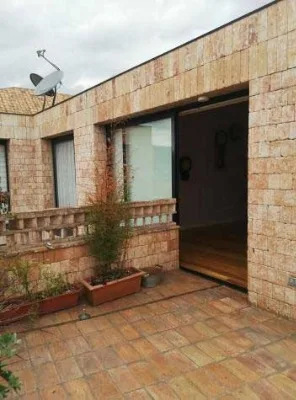The most dangerous predator in the web of life
Editor’s note: This is the seventh of an eight-part series about the climate and biodiversity crises. John Keeble is a former Guardian and London Evening News journalist. He is part of Cuenca’s thriving hiking, cycling and writing communities. You can download free his latest novel, Beyond Extinction, via www.johnkeeble.net. To read part one of the series, click here.
By John Keeble
We are on the edge of killing huge areas of the web of life that sustains humans as well as every other plant and creature on the planet. When human-dependent elements of the web die, so do we.
Forget popular fantasies about gods and technologies smiling benignly on us as we gulp down the world’s resources and eradicate every life that gets in our way. They won’t save us.
Biodiversity, a more formal name for the web of life, is the intensely integrated natural life systems of the planet which, together, regulate and provide.
The systems are as huge as worldwide carbon and oxygen balancing, to ecosystems like deserts and coral reefs, and can be as localised as dependent cycles like soil, crops and pollinating bees.

When we kill life-sustaining biodiversity, we go too.
If they fail, either locally or globally – and there is a huge amount of scientific evidence to show their decline and growing failure – human life will be badly affected by lack of food, medicine and living conditions.
Here are several examples to show links with food, medicine and environments. Soil is the basis for around 90 per cent of all food. A spoonful can contain up to 50,000 types of bacteria, the effects and functions of which we do not understand. A failure in soil is a failure in food. At a higher level, the crop production cycle needs the healthy functioning of soil, plants and insects (particularly bees). If the bees go, we go … you must know that already.
But did you know we harvest an estimated 50,000-70,000 plant species for traditional and modern medicine worldwide, according to the World Wildlife Fund?
Perhaps the biggest system at risk is that of the world’s forests and our atmosphere. Massive land clearance for crops, farmed animals and human development has broken the system down to the point of crisis.
The risk of a cascading series of global warming is gaining recognition – an unpredictable cascade of biodiversity effects cannot be ruled out when we know so little about the vast number of species inhabiting the world.
About 1.7 million species have been recorded but scientists put the total number at around eight million. If viruses and bacteria are included, the number rises to billions, they say.
It has taken millions of years to produce the finely-balanced conditions for human life. We are now ripping through the world with profit-hunting carelessness. Links between species and ecosystems are being destroyed without any knowledge of the dangers.
My question: Any normal person would be shocked at the hunting and killing of such wonderful animals as lions, giraffes and elephants, but do you realise that our survival depends on the functioning of living ecosystems that are being destroyed by the agricultural, transport and energy industries?
According to an influential United Nations report, three-quarters of the world’s land surfaces has been severely changed to suit human needs and our actions have pushed up to a million species to the brink of extinction.
“It’s frightening but true,” said the Center for Biological Diversity. “We’re currently experiencing the worst spate of species die-offs since the loss of the dinosaurs 65 million years ago. Scientists estimate we’re now losing species at up to 1,000 times the [normal] background rate, with literally dozens going extinct every day. It could be a scary future indeed, with as many as 30 to 50 per cent of all species possibly heading toward extinction by mid-century.
“Unlike past mass extinctions, caused by events like asteroid strikes, volcanic eruptions, and natural climate shifts, the current crisis is almost entirely caused by us — humans. In fact, 99 per cent of currently threatened species are at risk from human activities, primarily those driving habitat loss, introduction of exotic species, and global warming.”
It is empirically obvious that humans have a basic drive to destroy and conquer the natural world for their own needs.
It does not get much more basic than this: a hectare of rain forest may contain hundreds of species of trees and plants, even more species of insects, huge numbers of reptiles and animals; a hectare controlled by humans will have a handful of plants and trees, only a few insect survivors of chemical warfare, and maybe a couple of passing animals that have escaped the bullet.
Concrete cities, ruthless control and destruction of other species in towns, villages and any open land. Before human occupation, those areas were natural forests and other environments produced my millions of years of biological refinement.
Today, human demands for profit- and pleasure-driven projects are pushing the environment beyond what is can sustain, and there is little to suggest it will not accelerate as world population increases.
My questions: One of the mega-ideas is to return about half of the world to nature to rehabilitate the ecosystems and animal populations. That would be mean shutting down the meat and dairy industries, the most land-greedy and polluting way to produce food. Would you support that? An everyday idea for us all is that we should buy only sustainable foods and products. How do you feel about that?
Ana María Hernández, chair of the Intergovernmental Science-Policy Platform on Biodiversity and Ecosystem Services which predicts up to a million extinctions, said: “If I look at my generation, the people who are running the companies and countries and society in general, I don’t know if we are going to be able [to] make extreme transformative changes, because we love to do the things the way we always do things. We are in our comfort zone and it is very difficult to change… [But] if we cannot change business-as-usual we are going to be in trouble.”
She advocated buying sustainable food and products, reducing meat consumption, and picking the right candidates in political elections.
“Voters must understand the environmental proposals of the candidates” rather than voting for them because they are “charismatic or famous”, she said.
What about you? Do you care enough about the kids in your family to work out which candidate pledges to fight for the future and give that person your vote?


















